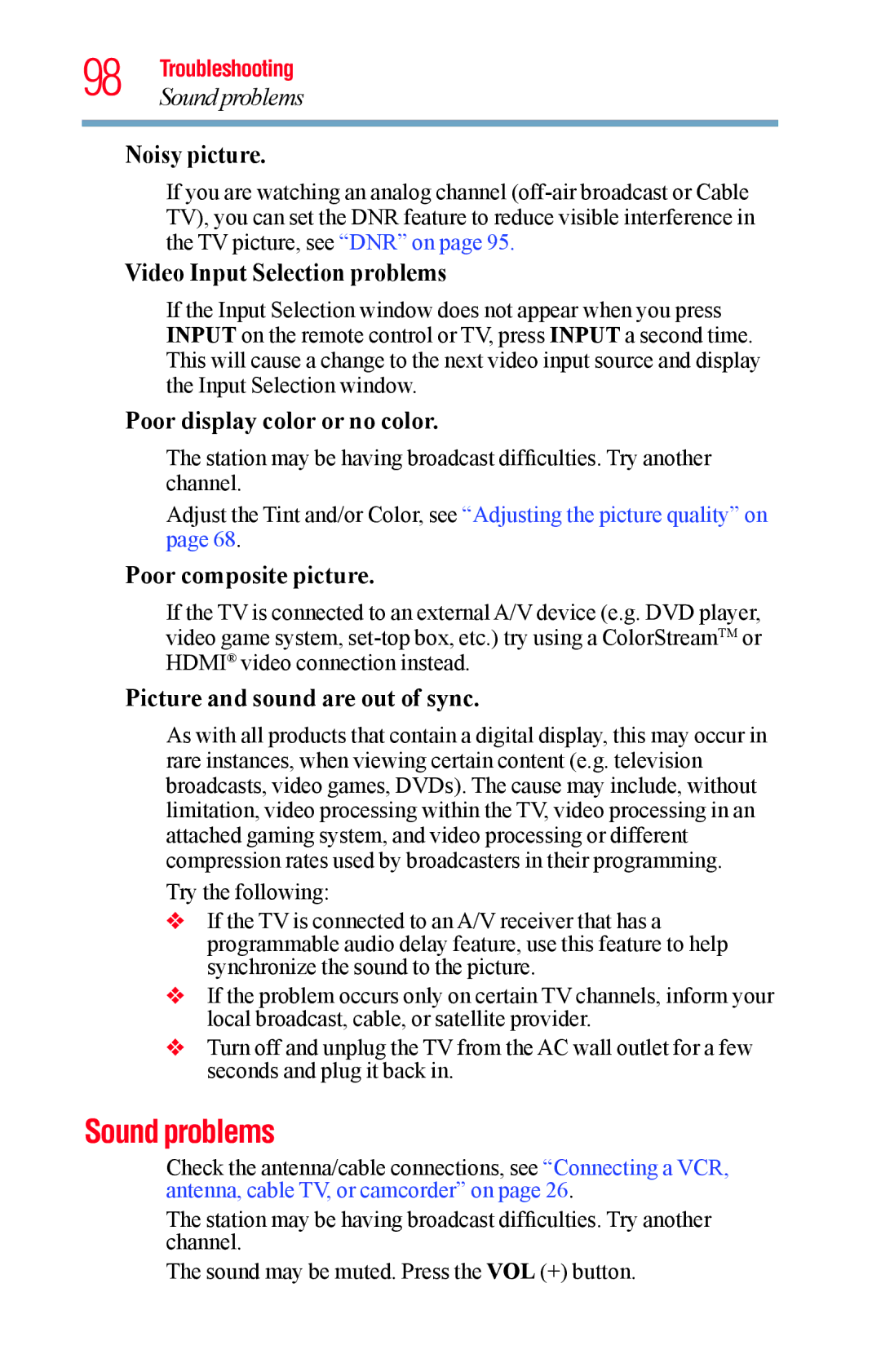98 Troubleshooting
Sound problems
Noisy picture.
If you are watching an analog channel
Video Input Selection problems
If the Input Selection window does not appear when you press INPUT on the remote control or TV, press INPUT a second time. This will cause a change to the next video input source and display the Input Selection window.
Poor display color or no color.
The station may be having broadcast difficulties. Try another channel.
Adjust the Tint and/or Color, see “Adjusting the picture quality” on page 68.
Poor composite picture.
If the TV is connected to an external A/V device (e.g. DVD player, video game system,
Picture and sound are out of sync.
As with all products that contain a digital display, this may occur in rare instances, when viewing certain content (e.g. television broadcasts, video games, DVDs). The cause may include, without limitation, video processing within the TV, video processing in an attached gaming system, and video processing or different compression rates used by broadcasters in their programming.
Try the following:
vIf the TV is connected to an A/V receiver that has a programmable audio delay feature, use this feature to help synchronize the sound to the picture.
vIf the problem occurs only on certain TV channels, inform your local broadcast, cable, or satellite provider.
vTurn off and unplug the TV from the AC wall outlet for a few seconds and plug it back in.
Sound problems
Check the antenna/cable connections, see “Connecting a VCR, antenna, cable TV, or camcorder” on page 26.
The station may be having broadcast difficulties. Try another channel.
The sound may be muted. Press the VOL (+) button.
